// 创建或获取Application
Application app = packageInfo.makeApplication(false, mInstrumentation);
// 初始化Service
service.attach(context, this, data.info.name, data.token, app,
ActivityManager.getService());
// 回调通知开发者service创建完成
service.onCreate();
mServices.put(data.token, service);
try {
//通知AMS
ActivityManager.getService().serviceDoneExecuting(
data.token, SERVICE_DONE_EXECUTING_ANON, 0, 0);
} catch (RemoteException e) {
throw e.rethrowFromSystemServer();
}
} catch (Exception e) {
if (!mInstrumentation.onException(service, e)) {
throw new RuntimeException(
"Unable to create service " + data.info.name
- ": " + e.toString(), e);
}
}
}
这一步主要做了以下事情:
- 获取包信息
- 获取类加载器
- 创建Service实例
- 创建上下文
- 创建或获取Application
- 初始化Service
- 回调通知开发者service创建完成
- 通知AMS
Service 的绑定
ContextImpl到AMS的调用过程
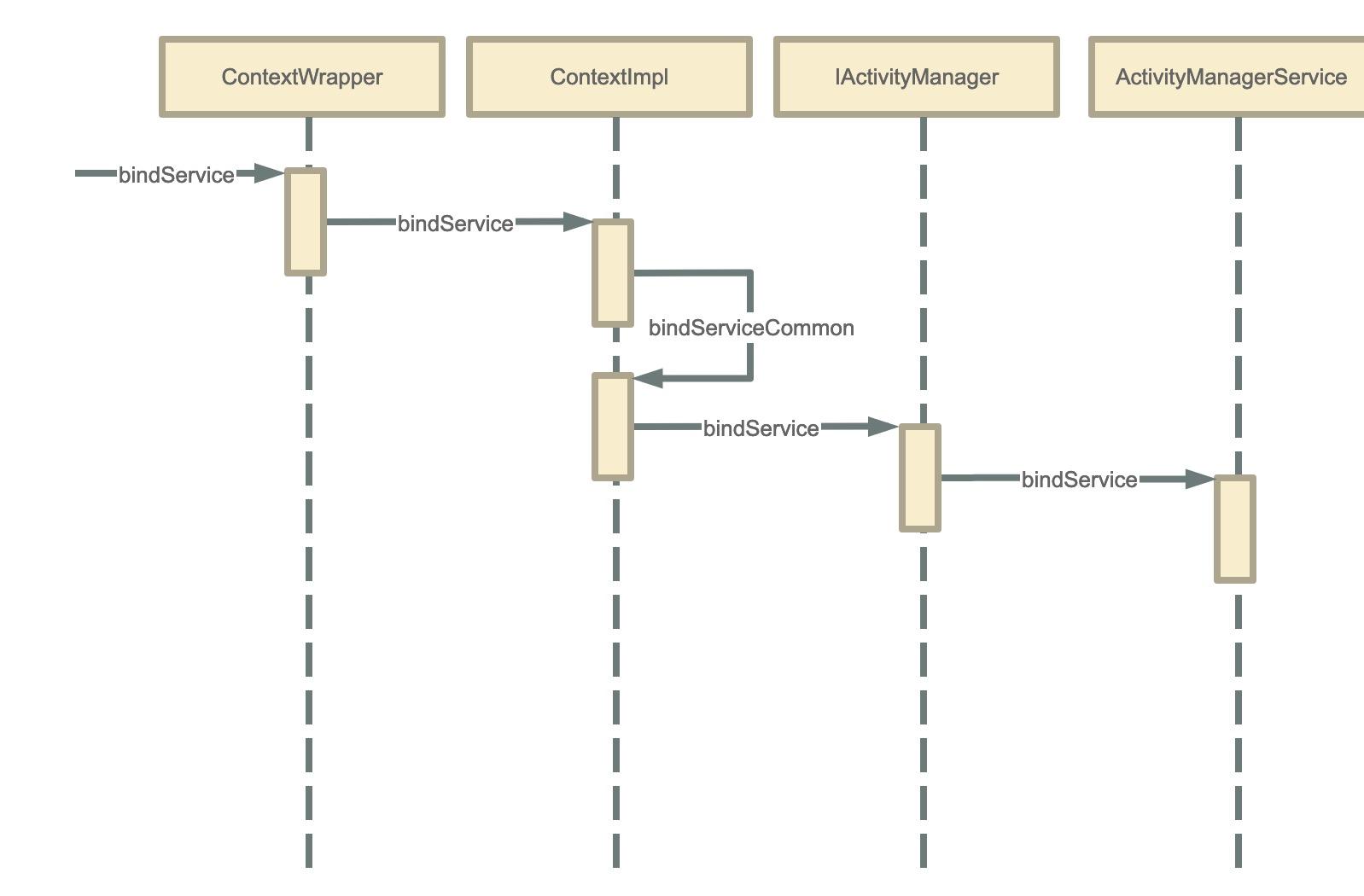
我们调用startService其实调的是ContextWrapper的startService方法
frameworks/base/core/java/android/content/ContextWrapper.java
Context mBase;
@Override
public boolean bindService(Intent service, ServiceConnection conn,
int flags) {
return mBase.bindService(service, conn, flags);
}
Context的具体实现是ContextImpl
frameworks/base/core/java/android/app/ContextImpl.java
@Override
public boolean bindService(Intent service, ServiceConnection conn,
int flags) {
warnIfCallingFromSystemProcess();
return bindServiceCommon(service, conn, flags, mMainThread.getHandler(),
Process.myUserHandle());
}
private boolean bindServiceCommon(Intent service, ServiceConnection conn, int flags, Handler
handler, UserHandle user) {
IServiceConnection sd;
…
if (mPackageInfo != null) {
sd = mPackageInfo.getServiceDispatcher(conn, getOuterContext(), handler, flags);
} else {
throw new RuntimeException(“Not supported in system context”);
}
…
validateServiceIntent(service);
try {
…
int res = ActivityManager.getService().bindService(
mMainThread.getApplicationThread(), getActivityToken(), service,
service.resolveTypeIfNeeded(getContentResolver()),
sd, flags, getOpPackageName(), user.getIdentifier());
if (res < 0) {
throw new SecurityException(
"Not allowed to bind to service " + service);
}
return res != 0;
} catch (RemoteException e) {
throw e.rethrowFromSystemServer();
}
}
AMS通知ActivityThread

frameworks/base/services/core/java/com/android/server/am/ActivityManagerService.java
final ActiveServices mServices;
public int bindService(IApplicationThread caller, IBinder token, Intent service,
String resolvedType, IServiceConnection connection, int flags, String callingPackage,
int userId) throws TransactionTooLargeException {
…
synchronized(this) {
return mServices.bindServiceLocked(caller, token, service,
resolvedType, connection, flags, callingPackage, userId);
}
}
(Android 10 之后会跳转bindIsolatedService方法先)
public int bindService(IApplicationThread caller, IBinder token, Intent service,
String resolvedType, IServiceConnection connection, int flags,
String callingPackage, int userId) throws TransactionTooLargeException {
return bindIsolatedService(caller, token, service, resolvedType, connection, flags,
null, callingPackage, userId);
}
public int bindIsolatedService(IApplicationThread caller, IBinder token, Intent service,
String resolvedType, IServiceConnection connection, int flags, String instanceName,
String callingPackage, int userId) throws TransactionTooLargeException {
…
synchronized(this) {
return mServices.bindServiceLocked(caller, token, service,
resolvedType, connection, flags, instanceName, callingPackage, userId);
}
}
frameworks/base/services/core/java/com/android/server/am/ActiveServices.java
int bindServiceLocked(IApplicationThread caller, IBinder token, Intent service,
String resolvedType, final IServiceConnection connection, int flags,
String callingPackage, final int userId) throws TransactionTooLargeException {
…
// 记录进程信息
final ProcessRecord callerApp = mAm.getRecordForAppLocked(caller);
…
// Activity信息
ActivityRecord activity = null;
if (token != null) {
activity = ActivityRecord.isInStackLocked(token);
if (activity == null) {
Slog.w(TAG, "Binding with unknown activity: " + token);
return 0;
}
}
…
try {
…
// Service与应用程序的关系
AppBindRecord b = s.retrieveAppBindingLocked(service, callerApp);
ConnectionRecord c = new ConnectionRecord(b, activity,
connection, flags, clientLabel, clientIntent);
IBinder binder = connection.asBinder();
ArrayList clist = s.connections.get(binder);
…
// 如果设置了BIND_AUTO_CREATE标志,则启动bringUpServiceLocked方法,后面参考Service启动
if ((flags&Context.BIND_AUTO_CREATE) != 0) {
s.lastActivity = SystemClock.uptimeMillis();
if (bringUpServiceLocked(s, service.getFlags(), callerFg, false,
permissionsReviewRequired) != null) {
return 0;
}
}
…
if (s.app != null && b.intent.received) {
try {
c.conn.connected(s.name, b.intent.binder, false);
} catch (Exception e) {
…
}
if (b.intent.apps.size() == 1 && b.intent.doRebind) {
requestServiceBindingLocked(s, b.intent, callerFg, true);
}
} else if (!b.intent.requested) {
requestServiceBindingLocked(s, b.intent, callerFg, false);
}
getServiceMapLocked(s.userId).ensureNotStartingBackgroundLocked(s);
} finally {
Binder.restoreCallingIdentity(origId);
}
return 1;
}
这个方法会先获取进程与Activity等信息,然后获取Service与应用程序的关系,
(注意的是,如果存在设置了BIND_AUTO_CREATE的连接,就不销毁服务直接返回,启动bringUpServiceLocked方法,后面参考Service启动)
后面调用requestServiceBindingLocked方法
private final boolean requestServiceBindingLocked(ServiceRecord r, IntentBindRecord i,
boolean execInFg, boolean rebind) throws TransactionTooLargeException {
…
if ((!i.requested || rebind) && i.apps.size() > 0) {
try {
bumpServiceExecutingLocked(r, execInFg, “bind”);
r.app.forceProcessStateUpTo(ActivityManager.PROCESS_STATE_SERVICE);
r.app.thread.scheduleBindService(r, i.intent.getIntent(), rebind,
r.app.repProcState);
if (!rebind) {
i.requested = true;
}
i.hasBound = true;
i.doRebind = false;
} catch (TransactionTooLargeException e) {
…
} catch (RemoteException e) {
…
}
}
return true;
}
这里的app.thread指的是IApplicationThread,它的实现是ActivityThread的内部类ApplicationThread, 其中ApplicationThread继承了IApplicationThread.Stub
ActivityThread绑定Service
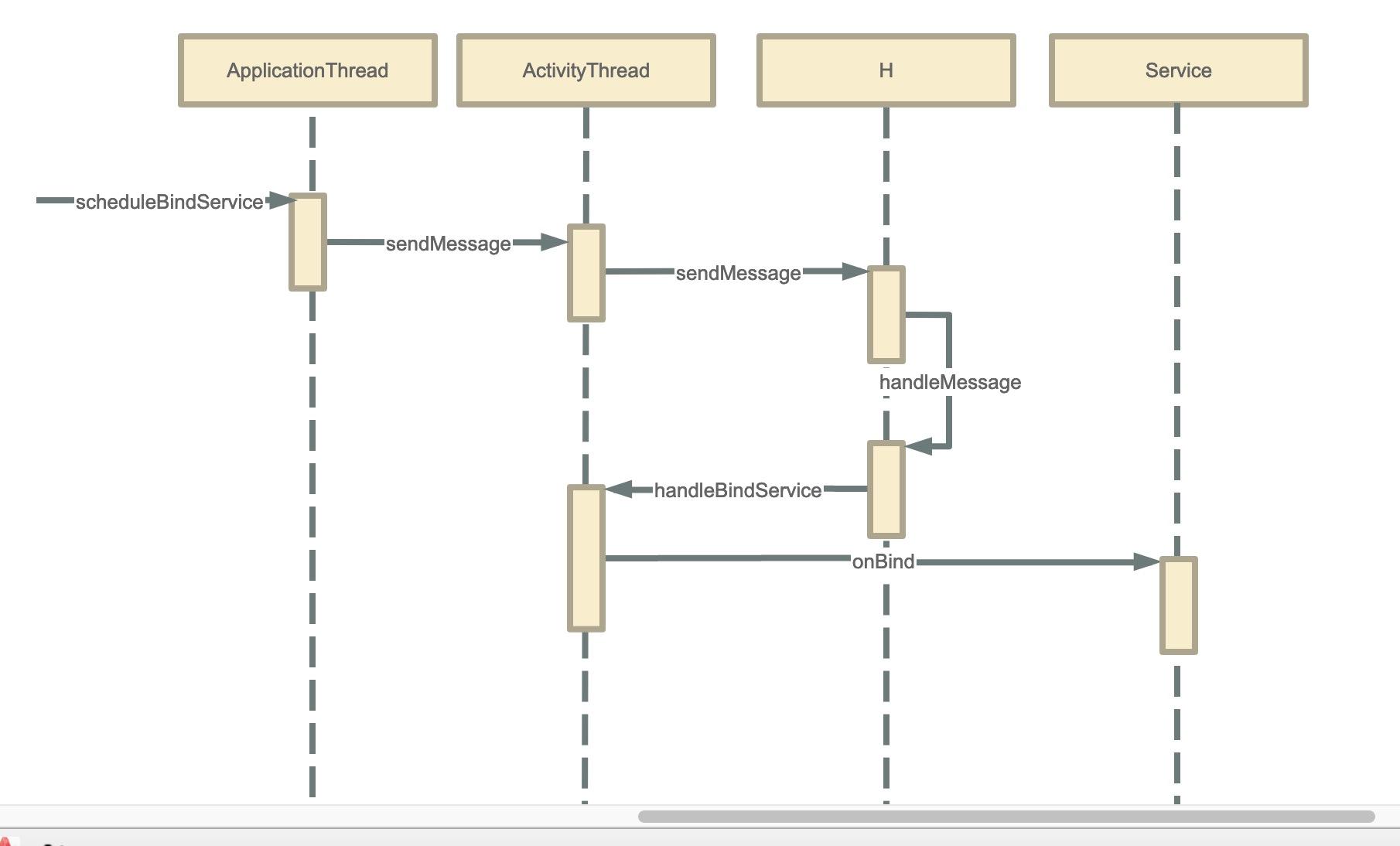
frameworks/base/core/java/android/app/ActivityThread.java#ApplicationThread
public final void scheduleBindService(IBinder token, Intent intent,
boolean rebind, int processState) {
updateProcessState(processState, false);
BindServiceData s = new BindServiceData();
s.token = token;
s.intent = intent;
s.rebind = rebind;
if (DEBUG_SERVICE)
Slog.v(TAG, “scheduleBindService token=” + token + " intent=" + intent + " uid="
- Binder.getCallingUid() + " pid=" + Binder.getCallingPid());
sendMessage(H.BIND_SERVICE, s);
}
然后就是向mH发送BIND_SERVICE命令,在H的handleMessage里面接收
frameworks/base/core/java/android/app/ActivityThread.java
public void handleMessage(Message msg) {
if (DEBUG_MESSAGES) Slog.v(TAG, ">>> handling: " + codeToString(msg.what));
switch (msg.what) {
case BIND_SERVICE:
Trace.traceBegin(Trace.TRACE_TAG_ACTIVITY_MANAGER, “serviceBind”);
handleBindService((BindServiceData)msg.obj);
Trace.traceEnd(Trace.TRACE_TAG_ACTIVITY_MANAGER);
} break;
}
}
final ArrayMap<IBinder, Service> mServices = new ArrayMap<>();
private void handleBindService(BindServiceData data) {
Service s = mServices.get(data.token);
if (DEBUG_SERVICE)
Slog.v(TAG, “handleBindService s=” + s + " rebind=" + data.rebind);
if (s != null) {
try {
data.intent.setExtrasClassLoader(s.getClassLoader());
data.intent.prepareToEnterProcess();
try {
if (!data.rebind) {
IBinder binder = s.onBind(data.intent);
ActivityManager.getService().publishService(
data.token, data.intent, binder);
} else {
s.onRebind(data.intent);
ActivityManager.getService().serviceDoneExecuting(
data.token, SERVICE_DONE_EXECUTING_ANON, 0, 0);
}
ensureJitEnabled();
} catch (RemoteException ex) {
throw ex.rethrowFromSystemServer();
}
} catch (Exception e) {
if (!mInstrumentation.onException(s, e)) {
throw new RuntimeException(
"Unable to bind to service " + s
- " with " + data.intent + ": " + e.toString(), e);
}
}
}
}
mService是一个存着token与Server关系的Map,先从中获取要绑定的Service,再判断Service是否初次绑定, 是的话回调onBind方法并调用AMS的publishService方法;否则回调onRebind并调用AMS的serviceDoneExecuting方法
我们先看下publishService方法
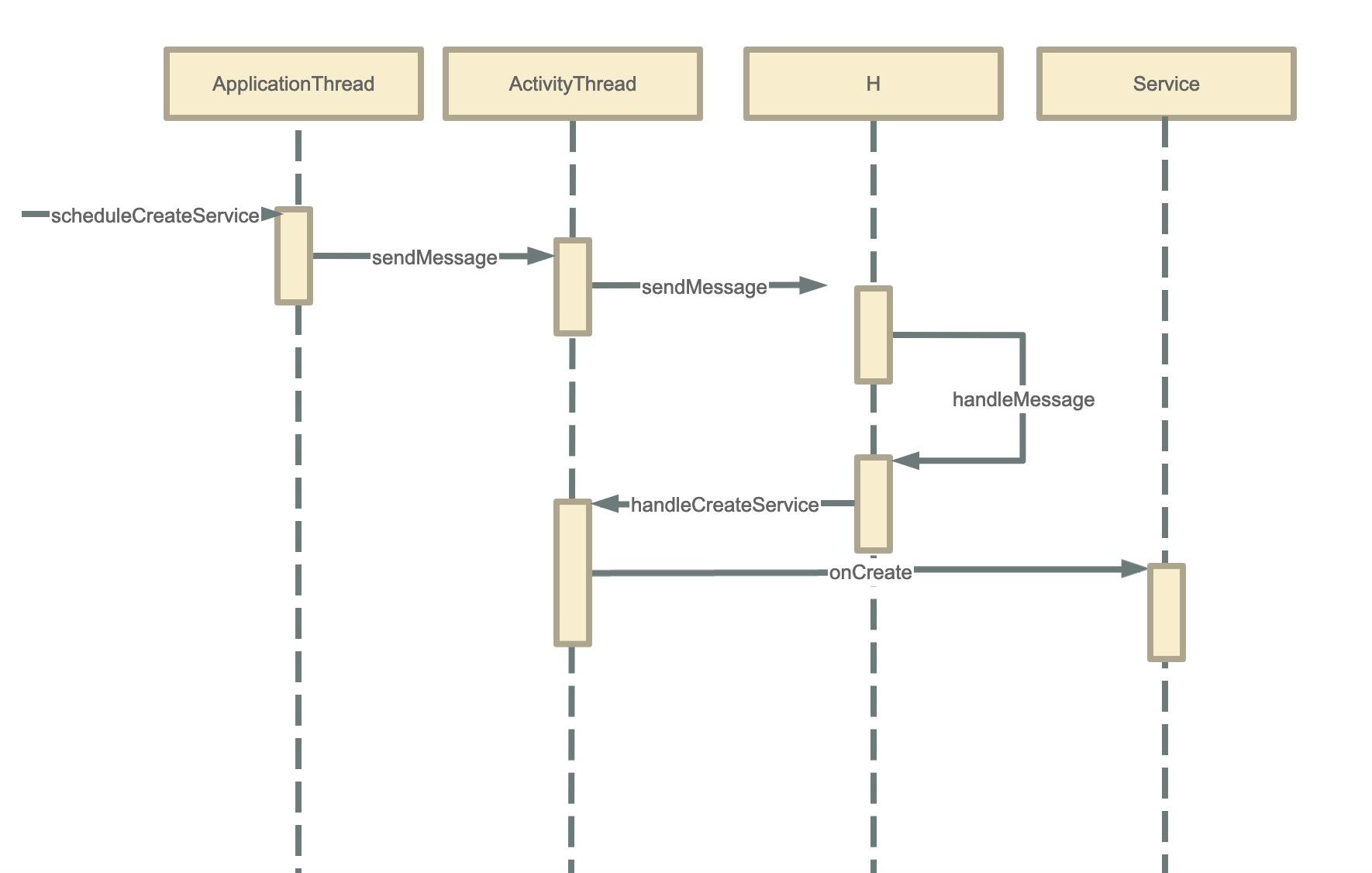
frameworks/base/services/core/java/com/android/server/am/ActivityManagerService.java
public void publishService(IBinder token, Intent intent, IBinder service) {
// Refuse possible leaked file descriptors
if (intent != null && intent.hasFileDescriptors() == true) {
throw new IllegalArgumentException(“File descriptors passed in Intent”);
}
synchronized(this) {
if (!(token instanceof ServiceRecord)) {
throw new IllegalArgumentException(“Invalid service token”);
}
mServices.publishServiceLocked((ServiceRecord)token, intent, service);
}
}
frameworks/base/services/core/java/com/android/server/am/ActiveServices.java
void publishServiceLocked(ServiceRecord r, Intent intent, IBinder service) {
final long origId = Binder.clearCallingIdentity();
try {
…
if (r != null) {
Intent.FilterComparison filter
= new Intent.FilterComparison(intent);
IntentBindRecord b = r.bindings.get(filter);
if (b != null && !b.received) {
b.binder = service;
b.requested = true;
b.received = true;
for (int conni=r.connections.size()-1; conni>=0; conni–) {
ArrayList clist = r.connections.valueAt(conni);
for (int i=0; i<clist.size(); i++) {
ConnectionRecord c = clist.get(i);
…
try {
c.conn.connected(r.name, service, false);
} catch (Exception e) {
…
}
}
}
}
…
serviceDoneExecutingLocked(r, mDestroyingServices.contains®, false);
}
} finally {
Binder.restoreCallingIdentity(origId);
}
}
可知后面也是走到serviceDoneExecutingLocked方法,我们继续看下c.conn.connected
frameworks/base/services/core/java/com/android/server/am/ConnectionRecord.java
final IServiceConnection conn; // The client connection.
IServiceConnection是一个AIDL接口, 具体实现为ServiceDispatcher.InnerConnection,其中ServiceDispatcher是LoadedApk的内部类 frameworks/base/core/java/android/app/LoadedApk.java
static final class ServiceDispatcher {
…
private static class InnerConnection extends IServiceConnection.Stub {
final WeakReference<LoadedApk.ServiceDispatcher> mDispatcher;
InnerConnection(LoadedApk.ServiceDispatcher sd) {
mDispatcher = new WeakReference<LoadedApk.ServiceDispatcher>(sd);
}
public void connected(ComponentName name, IBinder service, boolean dead)
throws RemoteException {
LoadedApk.ServiceDispatcher sd = mDispatcher.get();
if (sd != null) {
sd.connected(name, service, dead);
}
}
}
}
然后看下ServiceDispatcher的connected方法
frameworks/base/core/java/android/app/LoadedApk.java#ServiceDispatcher
public void connected(ComponentName name, IBinder service, boolean dead) {
if (mActivityThread != null) {
mActivityThread.post(new RunConnection(name, service, 0, dead));
} else {
doConnected(name, service, dead);
}
}
这个方法向ActivityThread post了一个Runnable
private final class RunConnection implements Runnable {
RunConnection(ComponentName name, IBinder service, int command, boolean dead) {
mName = name;
mService = service;
mCommand = command;
mDead = dead;
}
public void run() {
if (mCommand == 0) {
doConnected(mName, mService, mDead);
} else if (mCommand == 1) {
doDeath(mName, mService);
}
}
final ComponentName mName;
final IBinder mService;
final int mCommand;
final boolean mDead;
}
Runnable里面是连接和关闭连接的代码。
public void doConnected(ComponentName name, IBinder service, boolean dead) {
ServiceDispatcher.ConnectionInfo old;
ServiceDispatcher.ConnectionInfo info;
synchronized (this) {
if (mForgotten) {
// We unbound before receiving the connection; ignore
// any connection received.
return;
}
old = mActiveConnections.get(name);
if (old != null && old.binder == service) {
// Huh, already have this one. Oh well!
return;
}
if (service != null) {
// A new service is being connected… set it all up.
info = new ConnectionInfo();
info.binder = service;
info.deathMonitor = new DeathMonitor(name, service);
try {
service.linkToDeath(info.deathMonitor, 0);
mActiveConnections.put(name, info);
} catch (RemoteException e) {
// This service was dead before we got it… just
// don’t do anything with it.
mActiveConnections.remove(name);
return;
}
} else {
// The named service is being disconnected… clean up.
mActiveConnections.remove(name);
}
if (old != null) {
old.binder.unlinkToDeath(old.deathMonitor, 0);
}
}
// If there was an old service, it is now disconnected.
if (old != null) {
mConnection.onServiceDisconnected(name);
}
if (dead) {
mConnection.onBindingDied(name);
}
// If there is a new service, it is now connected.
if (service != null) {
mConnection.onServiceConnected(name, service);
}
}
自我介绍一下,小编13年上海交大毕业,曾经在小公司待过,也去过华为、OPPO等大厂,18年进入阿里一直到现在。
深知大多数初中级Android工程师,想要提升技能,往往是自己摸索成长或者是报班学习,但对于培训机构动则近万的学费,着实压力不小。自己不成体系的自学效果低效又漫长,而且极易碰到天花板技术停滞不前!
因此收集整理了一份《2024年Android移动开发全套学习资料》,初衷也很简单,就是希望能够帮助到想自学提升又不知道该从何学起的朋友,同时减轻大家的负担。
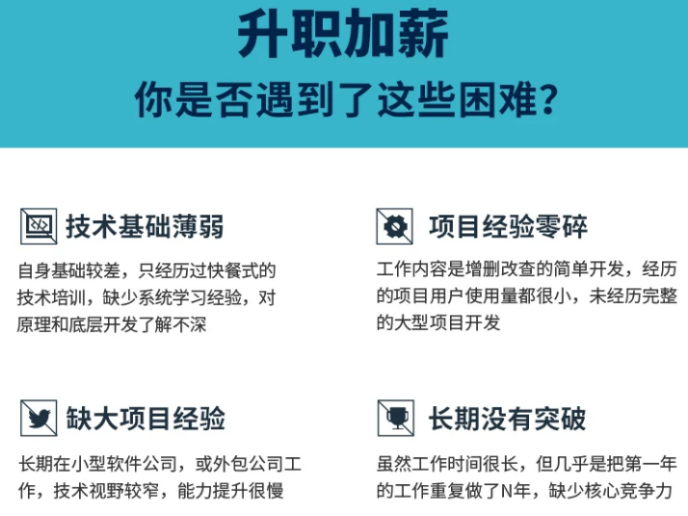
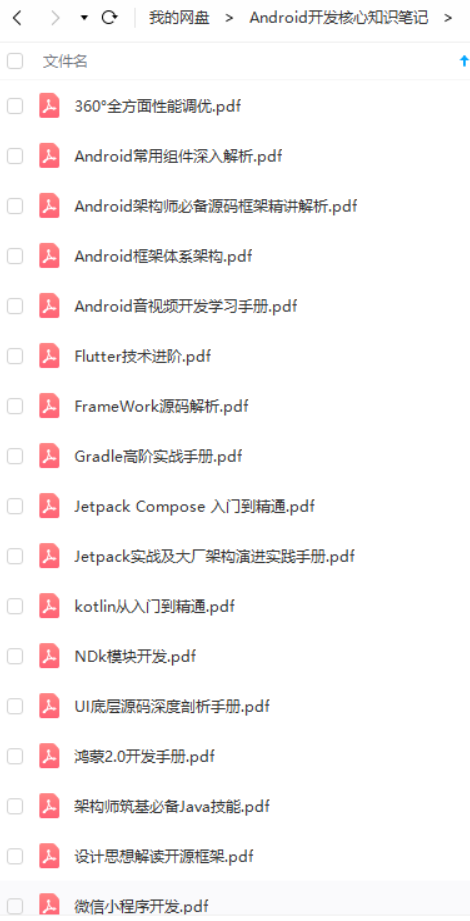
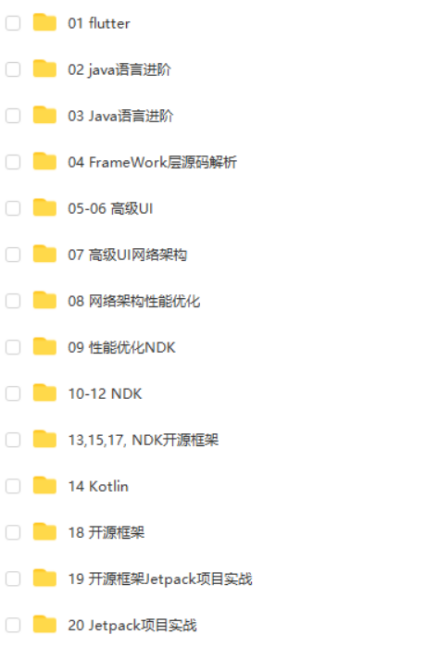

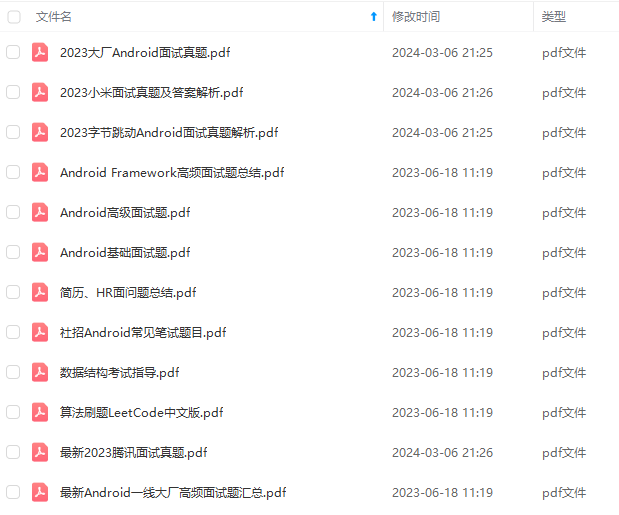
既有适合小白学习的零基础资料,也有适合3年以上经验的小伙伴深入学习提升的进阶课程,基本涵盖了95%以上Android开发知识点,真正体系化!
由于文件比较大,这里只是将部分目录截图出来,每个节点里面都包含大厂面经、学习笔记、源码讲义、实战项目、讲解视频,并且会持续更新!
如果你觉得这些内容对你有帮助,可以扫码获取!!(备注:Android)

学习交流
群内有许多来自一线的技术大牛,也有在小厂或外包公司奋斗的码农,我们致力打造一个平等,高质量的Android交流圈子,不一定能短期就让每个人的技术突飞猛进,但从长远来说,眼光,格局,长远发展的方向才是最重要的。
35岁中年危机大多是因为被短期的利益牵着走,过早压榨掉了价值,如果能一开始就树立一个正确的长远的职业规划。35岁后的你只会比周围的人更值钱。
《Android学习笔记总结+移动架构视频+大厂面试真题+项目实战源码》,点击传送门即可获取!
经、学习笔记、源码讲义、实战项目、讲解视频,并且会持续更新!**
如果你觉得这些内容对你有帮助,可以扫码获取!!(备注:Android)

学习交流
[外链图片转存中…(img-szK0dTHN-1711804164225)]
[外链图片转存中…(img-z6ftQ2Sz-1711804164225)]
群内有许多来自一线的技术大牛,也有在小厂或外包公司奋斗的码农,我们致力打造一个平等,高质量的Android交流圈子,不一定能短期就让每个人的技术突飞猛进,但从长远来说,眼光,格局,长远发展的方向才是最重要的。
35岁中年危机大多是因为被短期的利益牵着走,过早压榨掉了价值,如果能一开始就树立一个正确的长远的职业规划。35岁后的你只会比周围的人更值钱。
























 3245
3245











 被折叠的 条评论
为什么被折叠?
被折叠的 条评论
为什么被折叠?








